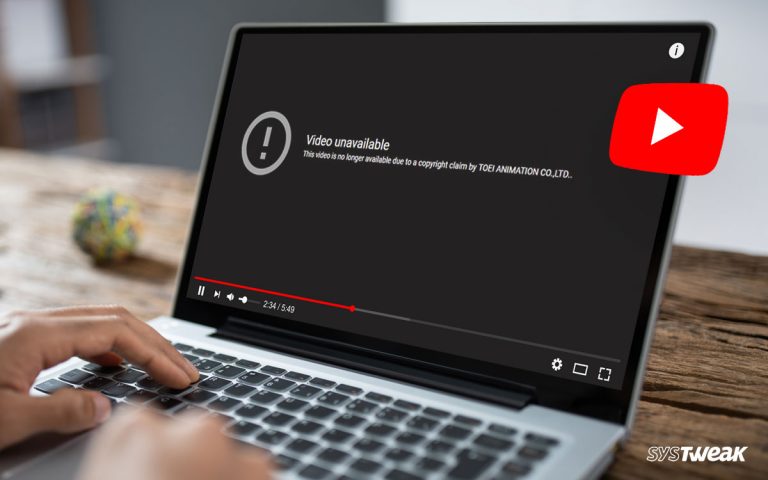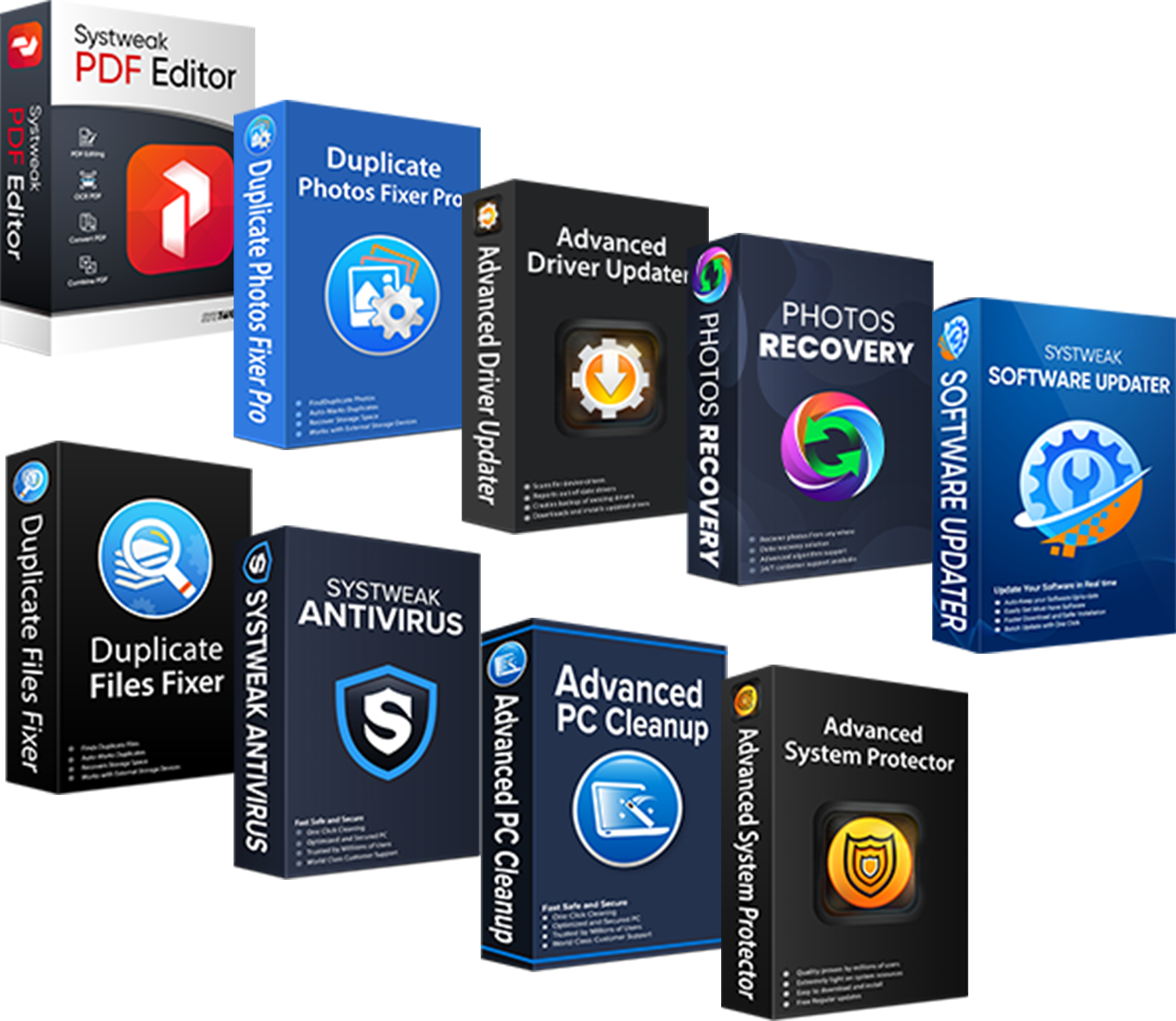Low system resources are an error that only some understand. Though it is not an upfront issue with an error code, it is pretty common with every user. Usually, when using a PC, you have a few heavy apps that don’t run well. This means they lag, while sometimes, they just won’t load, and all these issues arise because of low system resources. In addition, multiple reasons like poor resource management by the scheduler, hardware issues, or dedicated errors with the application also cause the problem. Either way, you need a proper fix to ensure that your PC is optimized and can make the most of the available system resources.
50% OFF

BLACK FRIDAY OFFERS
Unlock Black Friday Mega Savings — Systweak Tools FLAT 50% OFF!
In this blog, let’s look at some of the fixes you can try to resolve low system resources on Windows 11. Why Windows 11 in particular? Because that is the latest version where people have faced issues with system performance after upgrading.
So without further ado, let’s jump right into it!
Understanding Low System Resources Issue on Windows 11- 4 Ways to Fix
Before we talk about how you can fix the low system resources error on Windows 11, let us first understand what happens when there is a shortage of system resources. This lack of resources affects basic usage and interferes with daily Zoom calls or Team’s meetings.
Ideally, your RAM, ROM, processing power, and GPU are called system resources. When they are affected, your PC can no longer run the applications smoothly.
The issues that majorly affect your PC are –
- High Disk Usage
- High RAM Usage
- Extensive Background Processes
Besides these 3 issues, viruses and malware attacks on your PC also cause the system resources to malfunction. This is why you should ensure that your PC is safe from these issues.
Ways to Fix Low System Resources
Now that you understand the root causes of low system resources on your PC let’s look at ways you can fix things.
Method 1 – Kill Resource Hungry Processes
It can be irritating to open multiple apps on a system that is already lagging. Therefore, you should start optimizing the PC by removing unnecessarily heavy processes. This should bring back the balance to the system resources.
To do that, follow the given steps –
Step 1 – Open Task Manager on your PC using Ctrl+Shift+Esc on your keyboard.
Step 2 – Look at the resources and their usage percentage in the Task Manager. The one that you see higher is the one causing the issues.

Step 3 – Click on the Column for the resources. This will sort the processes from high to low using applications. It gives you an easy understanding of which process engages more than required.

Step 4 – Click on the process to select it and then click on the end task on the top menu bar.

Step 5 – Repeat the process to kill all the unnecessary resource-hungry applications.
This way, you can learn the resource usage pattern of certain apps and receive system resources to help run your desired processes better. After using this fix, make sure you run your desired application and check whether you still have low system resources error on your PC.
Method 2 – Alter Power Settings to Boost Performance
Sometimes, how your PC manages its power also defines the system resource usage. For instance, if you are on a laptop, specific power settings are different than when you use it on battery and when the charger is connected.
Changing your power plan can help manage the resources and shift you to a high performance that might drain your battery faster but can give you a better user experience. Here’s how to edit your power plan –
- Open the start menu and search for choosing a power plan
- Open the power plan option in the control panel as listed in the Windows start search results.

- In the opened Window, you will find two power plans, one is balanced, and the other is high-performance or “Manufacturer Recommended.”

- If you want to avoid tuning the system, simply click on high performance and save the settings.
- This will automatically give your PC performance a boost.
- However, if you want to customize the performance plan, you can click on change plan settings→ Change advanced power settings.

This way, you can manage your performance plan and make the most of your PC’s optimized state when the power is low or higher. The system resources are power-hogging; thus, you should have an optimized power plan to create a perfect performance-power balance.
Read Also: How To Speed Up Your Windows 10 Performance
Method 3 – Clean Boot Your PC
A clean boot ends all the tasks and services before restarting your PC. Ending all tasks also means you disable all the startup processes. So that when your PC restarts, the system resources are not stressed with running applications and can be used at your convenience.
To perform a clean boot, there are two things you need to do. The first is to end all the unnecessarily running services on your PC, and the other is to remove programs from your start-up list. Here’s how you do them both –
1. End running services
- Press Windows+R on your keyboard to bring up the Run search box on your PC.
- Type msconfig in the search and hit enter.

- This will open the system configuration. In the opened Window, click on the services tab on the top.

- Check the box that says Hide all Microsoft services to ensure you do not disable system services.
- Once you have done that, click on disable all and click on Apply.
2. Removing Startup Processes
- After disabling services, open Task Manager on Windows 11. Use Ctrl+Shift+Esc.
- In the Task Manager, expand the side menu by clicking on 3 lined buttons on the left top corner. Click on Startup apps.

- In the available list of applications, make sure you disable all the third-party applications.

- This way, you will be able to save a lot of resources the next time your PC starts.
With the help of a clean boot, you can easily reset your system resource usage to minimal, making it extremely easy to manage their usage.
Method 4- Use Advanced System Optimizer
If these manual ways cannot fix the issue, chances are that your PC is affected by malware draining your system resources.
Trying a third part optimization software can help. Advanced System Optimizer is one of the best tools for this purpose. It has a dedicated Smart PC care scan that you can use to identify issues from all corners of your PC and fix them instantly.
The link for the tool is available right here. Do check it out. Here is a step-by-step guide to giving you more insights into how it works.
- Install the application on your PC and run it. Keep in mind that you only need the internet to download the tool; the rest can be done offline.
- You can find the Smart PC Care scan option right before you open the application. Click on it to start the process.

- The scan searches multiple areas of your PC for errors making it a thorough check.

- Once the Scan is done, you can click on optimize to resolve all the issues.

- Keep in mind that your PC will be rebooted in the process, so ensure that you have closed all the other processes and saved your progress.

Once you click on Yes, the process begins, and you are good to go!
In most cases, this is the best and easiest solution that always works. If you cannot yield results from any of them, get your PC examined for hardware issues, as degraded hard drives and overused ram can often have some wear and tear.
This brings us to the end of this blog, and I hope the fixes shared in the blog assist you best with your problems and resolve to drain of system resources on Windows 11. Good luck!
Recommended-
How to Fix Windows 11 High Disk Usage
How To Free Up Disk Space Occupied By Duplicate Pictures
How To Defrag Disk Windows 10
How To Fix – System Restore Not Working In Windows 10





